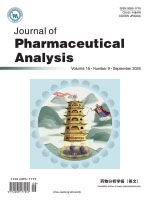2019 Vol. 9, No. 6
Display Method:
2019, 9(6): 373-391.
Abstract:
2019, 9(6): 392-399.
Abstract:
2019, 9(6): 400-405.
Abstract:
2019, 9(6): 406-413.
Abstract:
2019, 9(6): 431-436.
Abstract:
2019, 9(6): 437-448.
Abstract:
2019, 9(6): 449-450.
Abstract:



